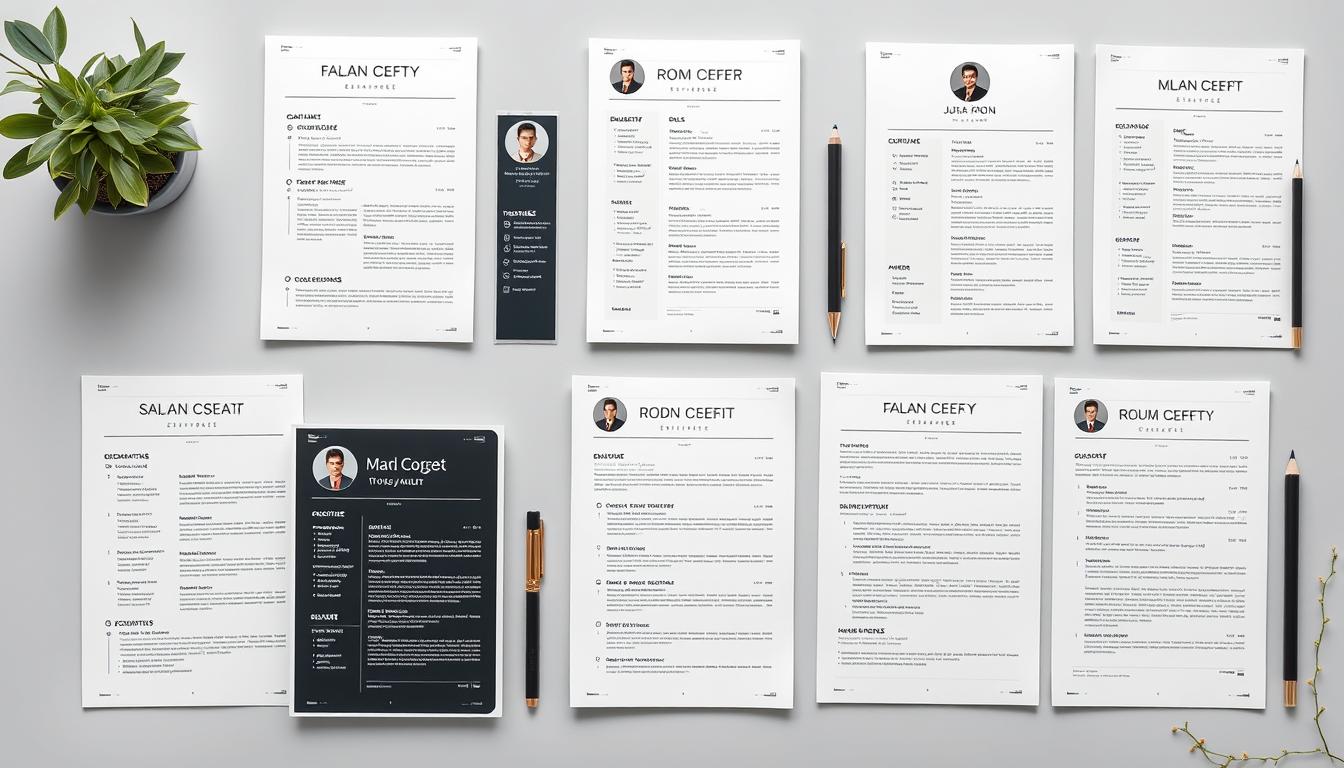Building a strong resume becomes critical as you move between educational stages. The shift from structured high school schedules to independent college learning requires adapting how you present skills and achievements. While high schoolers spend 30+ weekly hours in teacher-led classes, college students manage just 12-16 hours with professors – a change demanding new ways to showcase responsibility.
This guide helps you bridge that gap. Discover how high school resume examples differ from college-ready formats, especially when highlighting self-directed projects or part-time work. You’ll learn why academic year structures (36 weeks vs. two 15-week semesters) impact how you frame accomplishments.
Tools like RoboApply’s AI builder simplify creating documents for both stages. Their templates automatically adjust content emphasis – perfect for first-time applicants or those seeking internships. The platform’s grammar checker ensures error-free submissions, whether you’re applying to universities or campus jobs.
We’ll also explore strategies from college application resumes that work for younger students. Learn to balance academic honors with volunteer work, sports, or creative pursuits as your educational focus evolves.
Key Takeaways
- Academic resumes require different formats for high school seniors versus college applicants
- RoboApply’s AI tools adapt templates to your current educational level and goals
- Time management skills become crucial when transitioning to fewer structured class hours
- Professional documents should evolve with your growing independence and achievements
- Targeted resumes increase success rates for scholarships, internships, and program admissions
Understanding the Transition: High School to College
Transitioning between educational phases isn’t just about new classes—it’s about redefining how you communicate growth. High school’s 35-student classrooms with daily teacher guidance shift to lecture halls where professors expect self-driven analysis. This evolution demands strategic resume updates that spotlight your adaptability.
Comparing Class Structure and Time Management
High school schedules pack 30+ weekly hours of teacher-led instruction. College? Just 12-16 hours with professors, plus 15+ hours of independent study. Your resume must now highlight self-created study routines or research projects. For example: “Designed weekly study plans balancing STEM coursework with campus lab work.”
Admissions teams seek proof you’ll thrive with less oversight. Use action verbs like “initiated” or “spearheaded” when describing projects. Tools like no-degree resume strategies help structure these achievements clearly.
Differences in Teaching Style and Coursework
Teachers often provide step-by-step material reviews. Professors assign 100+ pages of weekly readings expecting synthesis, not regurgitation. Frame this shift by showcasing analytical skills: “Evaluated 3 conflicting economic theories in poli-sci capstone paper.”
Highlight experiences with open-ended assignments or peer collaborations. A study on student success shows admissions officers value applicants who demonstrate curiosity beyond textbooks. List relevant MOOCs or self-taught skills here.
Optimizing Your Student Resume with RoboApply
Crafting a standout resume requires smart tools that grow with your academic journey. RoboApply’s platform adapts to your evolving needs, whether you’re preparing scholarship applications or seeking internships. Let’s explore how its features streamline document creation while maintaining professional standards.

AI Resume Builder & Grammar Checker
RoboApply’s AI-powered builder transforms basic information into polished resumes. It suggests relevant skills based on your coursework and extracurriculars. The tool automatically adjusts formatting for different purposes—scholarship applications require different emphasis than part-time job submissions.
Built-in grammar checks ensure your writing meets higher education standards. This is crucial when transitioning from casual classroom assignments to formal proposals. You’ll catch errors like inconsistent verb tenses or informal language before hitting “submit.”
ATS Optimizer and Job Tracker Benefits
Over 90% of universities and employers use applicant tracking systems. RoboApply’s optimizer scans your resume for keywords matching program requirements. It highlights missing skills, letting you strengthen weak areas before applying.
The job tracker organizes deadlines across multiple applications. Color-coded status updates help prioritize tasks. Pair it with the free resume builder to maintain consistency while tailoring content for each opportunity.
Key Differences in High School vs. College Experience
Navigating educational milestones requires recognizing how environments shape skill development. Two critical areas evolve during this transition: classroom dynamics and personal accountability.
Class Time, Size, and Learning Environment
Smaller high school classes (under 35 peers) allow personalized teacher interactions. University lectures might host 100+ students, demanding proactive engagement. Highlight adaptability by describing experiences in both settings: “Led group projects in 30-person biology courses” or “Contributed to discussions in 150-seat auditoriums.”
Differences in class structures impact how you frame achievements. Admissions committees seek evidence you’ll thrive in varied formats. Mention hybrid courses or flipped classrooms to demonstrate flexibility.
Independence and Critical Responsibilities
Daily attendance checks shift to self-managed participation. Showcase decision-making through examples like: “Balanced 18 credit hours with campus employment using digital planners.” Include budgeting or laundry management to illustrate life skills.
RoboApply’s entry-level resume templates help structure these competencies. Their format emphasizes growth areas like time allocation and consequence management – key markers of readiness for advanced education.
Effective College, High-School and ... Resume Templates
Your academic journey’s next phase demands documents that reflect your evolving story. Modern universities host diverse learners – 18-year-old freshmen, career-changers pursuing degrees, and graduate researchers. Each needs a resume template that adapts to their unique path while meeting strict application standards.

Tailoring Your Resume for University Requirements
Admissions committees evaluate thousands of applications annually. Stand out by aligning your format with their priorities. For undecided majors, emphasize exploratory coursework: “Completed interdisciplinary seminars in robotics and graphic design to identify STEM/arts synergies.”
Returning students should highlight relevant experience: “Managed retail team while completing prerequisites for nursing program.” Use customizable templates that let you rearrange sections based on program requirements. High school resume templates often lack this flexibility – upgrade to university-ready formats as you advance.
Consider this example for transfer applications:
Academic Exploration Section
– Audited 3 upper-level psychology courses through university extension program
– Designed independent study comparing cognitive development theories
– Presented findings at regional student research symposium
Graduate school submissions need sharper focus. Replace general clubs with research projects or conference presentations. RoboApply’s tools help transform basic templates into targeted documents – ideal when juggling multiple applications.
Maximizing Learning Tools to Enhance Your Application
Balancing academic demands with career preparation requires smart digital solutions. RoboApply’s suite helps streamline application processes while maintaining academic performance. These tools work alongside traditional campus resources to create a powerful support system.
Leveraging RoboApply's Auto-Apply Chrome Extension
The auto-apply extension simplifies managing multiple deadlines. It scans scholarship boards and job portals, auto-filling forms with your pre-approved information. You maintain control through custom filters that prioritize opportunities matching your goals.
This tool proves essential when handling 2-3 hours of study per class hour. Set parameters for preferred programs or positions, then focus on coursework while applications submit automatically. Automated job search tools let you allocate time effectively without missing deadlines.
Utilizing Outreach CRM and Interview Coach
Build lasting connections with RoboApply’s relationship manager. The CRM tracks interactions with professors and admissions teams, sending reminders for follow-ups. Sync it with your calendar to prepare for meetings during study breaks.
The interview coach analyzes your practice responses using speech recognition technology. It suggests improvements in pacing and content structure – particularly useful for scholarship interviews requiring academic examples. Combine this feedback with Writing Center consultations to polish your narratives.
These digital resources complement campus support services. Use auto-saved application drafts with tutoring sessions to strengthen both technical documents and critical thinking skills. This integrated approach ensures your materials reflect true capabilities while meeting rigorous academic standards.
Building a Dynamic Social & Academic Profile
Your campus experiences shape both personal growth and professional opportunities. Strategic involvement in campus life creates tangible proof of leadership and collaboration skills employers value. Let’s explore how to transform everyday interactions into resume-ready achievements.

Networking on Campus and Beyond
Start by documenting involvement in residence hall councils or cultural organizations. For example: “Coordinated weekly meetings for 45-member sustainability club, increasing campus recycling by 30%.” This shows initiative while quantifying impact.
Professional connections thrive through academic conferences and career fairs. Record interactions using RoboApply’s CRM tool: “Networked with 12 industry professionals at engineering symposium, securing 3 informational interviews.” These details demonstrate proactive career planning.
Study groups reveal teamwork abilities. Frame them as skill-building exercises: “Led biweekly physics review sessions, improving group members’ test averages by 15%.” Use action verbs like “facilitated” or “mentored” to emphasize leadership roles.
Extracurriculars become evidence of time management. A theater tech crew position could read: “Balanced 20-hour weekly commitments with honors coursework through prioritized task scheduling.” This showcases both passion and responsibility.
Track personal development through reflective journaling. Note milestones like: “Developed conflict resolution strategies while organizing campus charity run.” These insights help articulate maturity during interviews.
Transform social connections into career assets. Alumni mixers and LinkedIn outreach build networks that outlast graduation. Document interactions systematically: “Maintained relationships with 8 professors through quarterly updates and research collaborations.”
Structuring Your Schedule to Balance Academics and Life
Mastering your weekly rhythm transforms academic pressure into manageable progress. Start by mapping fixed hours for classes, homework, and self-care using tools like Google Calendar. This visual approach helps spot conflicts early – like overlapping course deadlines with club events.
Prioritizing Coursework, Extracurriculars, and Responsibilities
Create a priority matrix each Sunday. Label tasks as urgent/important (term papers), important/non-urgent (networking events), or low-priority (laundry). Apps like Todoist let you color-code assignments by school subject or project type.
Block 2-hour study sessions between classes when energy peaks. A balanced schedule includes buffer time for unexpected tasks – 73% of students report better grades when planning flexibly. Track progress using RoboApply’s job tracker to align academic and career goals.
Adjust your template every semester. First-year students often need 3 hours weekly for laundry and meal prep, while seniors allocate more time for thesis work. Use the 15-week structure to phase in leadership roles – perfect for resume-building positions that demonstrate time management.
FAQ
How do class schedules differ between high school and college?
College schedules offer fewer in-class hours but require 2–3 hours of independent study per credit. You’ll manage flexible blocks for coursework, part-time jobs, or internships, unlike rigid high school timetables.
What makes college professors’ teaching styles unique?
Professors focus on critical analysis over memorization. They expect you to initiate discussions, ask deeper questions, and apply concepts to real-world scenarios—unlike high school teachers who often provide structured guidance.
How can RoboApply’s AI Resume Builder improve my application?
It scans for keyword gaps, fixes grammar errors, and aligns your resume with university or job requirements. The ATS Optimizer ensures your format passes automated screening tools used by recruiters.
Why does class size matter in college?
Larger lectures (100+ students) demand proactive note-taking and office hour visits, while seminars prioritize participation. High school classes are smaller, allowing more direct teacher support.
How do I balance coursework with extracurricular activities?
Use tools like RoboApply’s Job Tracker to schedule deadlines. Prioritize tasks using the 80/20 rule: focus on assignments worth the most toward your final grade first.
What resume sections do universities prioritize?
Highlight leadership roles, project outcomes, and relevant skills. Tailor sections like “Academic Projects” or “Internships” using RoboApply’s templates to match program-specific criteria.
How does the Auto-Apply Chrome Extension save time?
It autofills application forms and uploads documents across job boards like LinkedIn or Indeed. You save 10–15 hours monthly while tracking submissions in one dashboard.
What’s the biggest responsibility shift in college?
You’ll manage deadlines, housing, and budgeting without parental oversight. Tools like Outreach CRM help automate follow-ups with advisors or potential employers.
Can I reuse my high school resume for college applications?
No. Replace generic clubs with quantifiable achievements (e.g., “Raised K for STEM club” vs. “Member of Science Club”). Use RoboApply’s interview coach to practice program-specific questions.
How do I network effectively as a freshman?
Attend department mixers, join LinkedIn groups in your field, and use RoboApply’s CRM to track contacts. Professors and alumni often share internship leads if you demonstrate initiative.

















